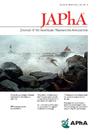美国骨质疏松症患者的边际医疗支出与健康相关生活质量负担
IF 2.5
4区 医学
Q3 PHARMACOLOGY & PHARMACY
Journal of the American Pharmacists Association
Pub Date : 2025-03-01
DOI:10.1016/j.japh.2024.102315
引用次数: 0
摘要
背景:骨质疏松症以骨密度降低为特征,显著影响生活质量。最近对美国的经济和人文负担的估计很少。目的:评估骨质疏松症对美国全因医疗保健费用和健康相关生活质量(HRQoL)的边际负担。方法:这项回顾性横断面研究利用2019-2021年MEPS数据,包括年龄≥50岁的患有或不患有骨质疏松症的成年人。HRQoL采用生理成分总结(PCS)和心理成分总结(MCS)评分进行评估。描述性分析报告了社会人口统计学/临床特征、医疗保健支出和PCS/MCS评分。一个由两部分组成的模型评估了骨质疏松症对总医疗支出的边际效应。多变量广义线性模型(GLM)估计骨质疏松组和非骨质疏松组之间MCS和PCS评分的边际差异,而多变量线性回归评估骨质疏松患者HRQoL的相关因素。结果:骨质疏松患者约289万,无骨质疏松患者约2500万。骨质疏松组的边际医疗保健总支出比非骨质疏松组高8,572.15美元(95% CI: 6,546.39- 14,597.92美元)。年龄、性别、婚姻状况、年龄和某些合并症是骨质疏松症患者HRQoL的重要预测因素。多变量GLM显示,骨质疏松患者的PCS评分比非骨质疏松患者低6.29个单位(95% CI: -7.08- -4.15), MCS评分比骨质疏松患者低4.22个单位(95% CI: -8.34- -3.31)。结论:骨质疏松患者的经济负担高于非骨质疏松患者,HRQoL低于非骨质疏松患者,需要改变政策和创新方法来改善骨质疏松患者的HRQoL,降低骨质疏松患者的医疗费用。本文章由计算机程序翻译,如有差异,请以英文原文为准。
Marginal health care expenditures and health-related quality of life burden in patients with osteoporosis in the United States
Background
Osteoporosis, marked by reduced bone density, significantly impacts quality of life. Recent estimates on its economic and humanistic burden in the United States are scarce.
Objective
To evaluate the marginal burden of osteoporosis on total all-cause health care costs and health-related quality of life (HRQoL) in the United States.
Methods
This retrospective cross-sectional study utilized 2019–2021 Medical Expenditure Panel Survey data, including adults aged ≥50 years with or without osteoporosis. HRQoL was assessed using physical component summary (PCS) and mental component summary (MCS) scores. Descriptive analyses reported sociodemographic/clinical characteristics, healthcare expenditures, and PCS/MCS scores. A two-part model assessed the marginal effect of osteoporosis on total healthcare expenditures. Multivariable generalized linear model (GLM) estimated the marginal differences in MCS and PCS scores between the osteoporosis and nonosteoporosis groups, while multivariable linear regression assessed factors associated with HRQoL among patients with osteoporosis.
Results
There were approximately 2.89 million patients with osteoporosis and 25 million without osteoporosis. The marginal total health care expenditures were $8572.15 (95% CI: $6546.39–$14,597.92) higher for the osteoporosis Vs. nonosteoporosis group. Age, sex, marital status, year, and certain comorbidities were significant predictors of HRQoL among osteoporosis patients. Multivariable GLM indicated PCS scores were 6.29 units lower (95% CI: −7.08 to −4.15) and MCS scores were 4.22 units lower (95% CI: −8.34 to −3.31) among osteoporosis Vs. nonosteoporosis patients.
Conclusion
Patients with osteoporosis showed higher economic burden and lower HRQoL than those without, highlighting the need for policy changes and innovative approaches to improve HRQoL and reduce healthcare expenses for osteoporosis management.
求助全文
通过发布文献求助,成功后即可免费获取论文全文。
去求助
来源期刊
CiteScore
3.30
自引率
14.30%
发文量
336
审稿时长
46 days
期刊介绍:
The Journal of the American Pharmacists Association is the official peer-reviewed journal of the American Pharmacists Association (APhA), providing information on pharmaceutical care, drug therapy, diseases and other health issues, trends in pharmacy practice and therapeutics, informed opinion, and original research. JAPhA publishes original research, reviews, experiences, and opinion articles that link science to contemporary pharmacy practice to improve patient care.

 求助内容:
求助内容: 应助结果提醒方式:
应助结果提醒方式:


